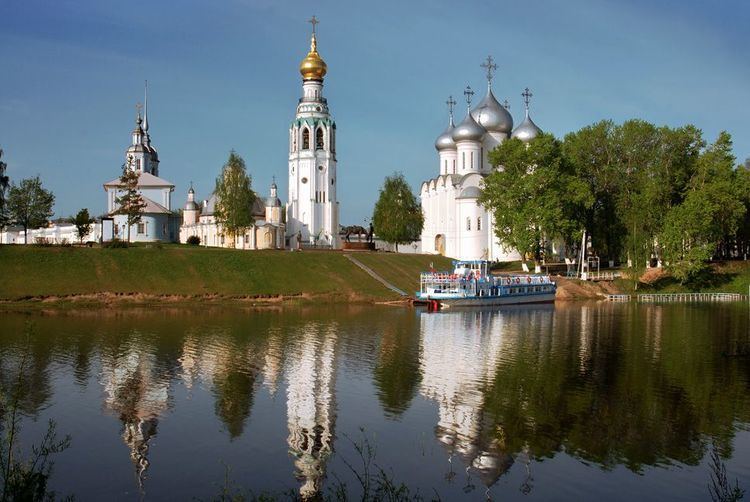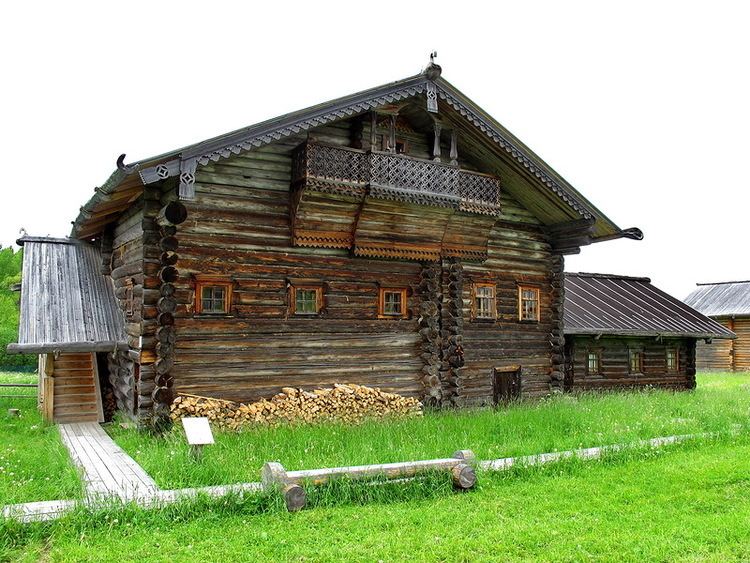Country Russia Area 116 km² Population 301,755 (2010) | ||
Vologda (Russian: ; ) is a city and the administrative, cultural, and scientific center of Vologda Oblast, Russia, located on the Vologda River. Population: 301,755?(2010 Census); 293,046 (2002 Census); 282,802?(1989 Census).
Contents
Map of Vologda
The city serves as a major transport hub of the Northwest of Russia. Vologda has been classified by the Ministry of Culture of Russian Federation as a historical city, one of the forty-one in Russia and one of only three in Vologda Oblast. 224 buildings in Vologda have been officially recognized as cultural heritage monuments.
History
Two conflicting theories exist as to the date of Vologdas foundation.
The year 1147 is the official date first fixed in 1780 by Alexey Zasetsky in his book "Stories about miracles of Gerasimus of Vologda". The story mentions that in 1147 the Trinity Monastery was founded close to the Vologda River. The date of the foundation of the monastery is then taken as the date of the foundation of the city of Vologda and is mentioned in official city documents. This date, which would make Vologda to be of the same age as Moscow, is, however, not supported by any scientific data and is considered by authoritative sources to be fictional. The story was only written in 1666 by a certain Foma, who got a request from Archbishop Markel to produce the vita of Gerasimus. Foma himself admitted that he had no sufficient data on the biography. The story contains many contradicting details. Besides, the monastic life in the Russian north was not known in the 12th century: the first monastery in Vladimir was founded in 1152, in Rostov in 1212, in the Belozersk area in 1251. Archeological excavations do not confirm this date either. Instead, they demonstrate that the city of Vologda was founded in the 13th century.
The year 1264 was the first mention of Vologda when it was included in the list of possessions of the Novgorod Republic in the agreement between the Republic and the Grand Prince of Russia. This date is also supported by archaeological data.
The nucleus of Vologda in the 13th century was not located in the area which is now the city center, but rather the area known now as "Lazy ground" (), close to the Resurrection church. This area was the center of Vologda up to 1565. Until that year, no stone constructions existed in Vologda: all of the city fortifications, bridges, houses, churches, and industrial enterprises were made of wood.
Culture and art

Vologda is one of the best preserved big cities of Russia combining traditional wooden architecture and stone monuments. In Vologda, 193 monuments of architecture and history are designated as cultural monuments of federal significance. The most known of them are

Of 116 historical cities of Russia only 16 have monuments of wooden architecture. Vologda is among them.
Museums
In Vologda, there are ten museums, four showrooms of the Vologda Regional Art Gallery, and the gallery "Red bridge". The largest cultural center of the Russian North is the Vologda State Museum Reserve. Its structure now includes the following museums,
Additionally, Vologda is home to a unique Russian private museum of political history—the Museum of Diplomatic Corps which highlights the short stay of diplomatic corps in Vologda in 1918.
Annual festivals
The following annual theater festivals are held in Vologda:
